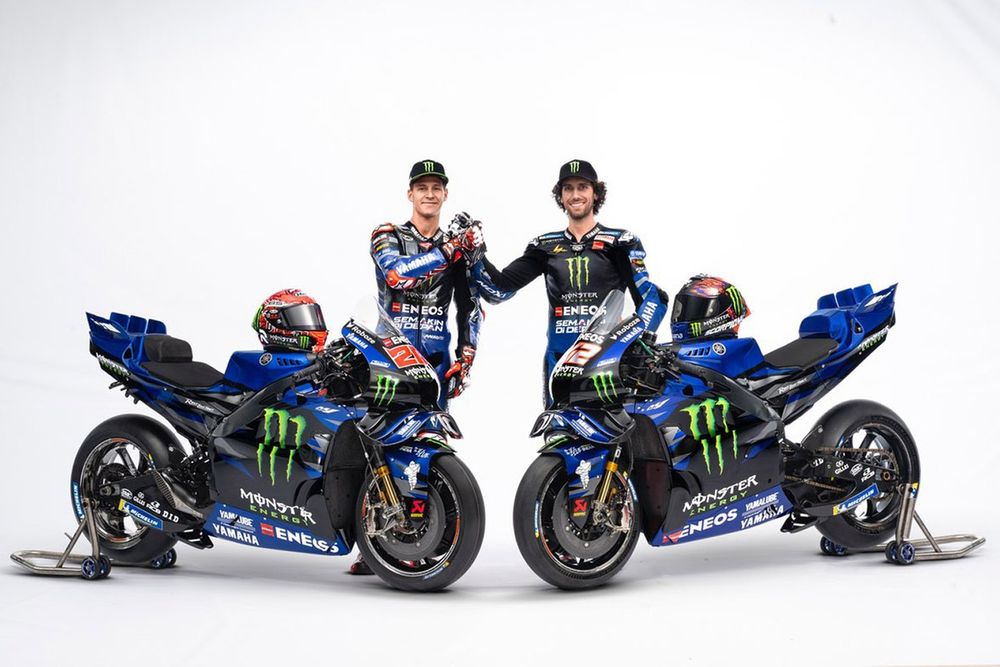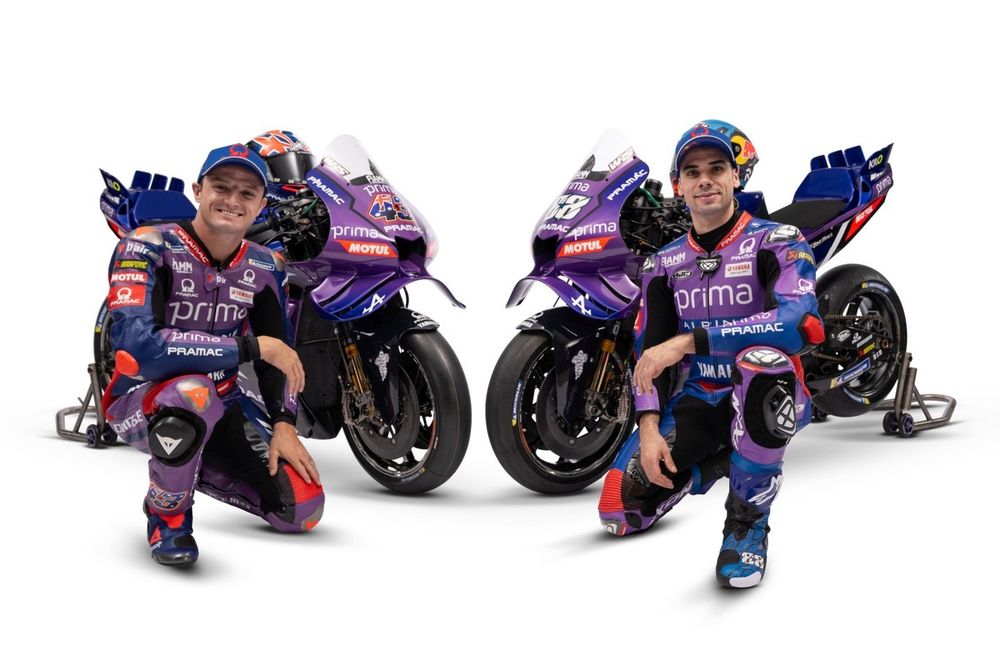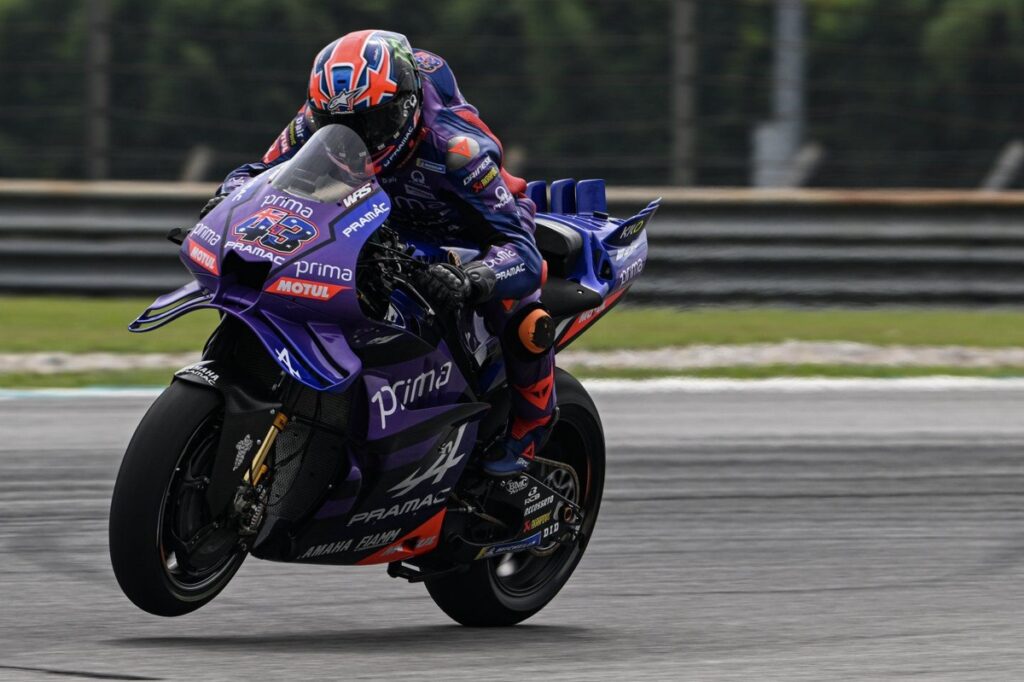Japanese culture is marked by tradition, and this is perfectly palpable in MotoGP, where Yamaha and Honda have resisted as much as they could before surrendering to the cruellest evidence and concluding that their methods, infallible until just over five years ago, have become completely obsolete.
Neither of them managed to register a single podium last season, a statistic that confirms the hole they got into and from which they will try to emerge starting Wednesday when the first pre-season tests of 2025 begin at Sepang.
In the previous shakedown, which served as initial contact and ended on Sunday, Fabio Quartararo was the fastest of all, followed by Jack Miller (Pramac), in a good start for the company, while waiting for the favourites to arrive this week, with Marc Marquez and Francesco Bagnaia at the helm.
In Malaysia, Yamaha will once again have four bikes on the track – in addition to those corresponding to the test riders – something it has sorely missed in the last two seasons after letting its satellite team die due to lack of confidence in being able to collect the fee for the deal.
This is very significant because it perfectly reflects the mentality of the Yamaha executives, who primarily saw the agreement with independent teams as a source of income; that is, as another business avenue.
By itself, this approach does not explain the calamitous situation in which Yamaha finds itself at a sporting level. But no one has any doubt that getting rid of two bikes out of the four it had until 2022 has not played in its favour. Rather the opposite, in a stage where the M1 lost its identity and its strong points – agility and traction.

Fabio Quartararo, Yamaha MotoGP Team, Alex Rins, Yamaha MotoGP Team
Gathering half the data as before and as the competition implies greatly slowing down the development and the possibility of solving the problems that arise, which in recent dates were not precisely few.
This, combined with the grace period that must be given to Max Bartolini, the technical director recruited a year ago from Ducati, before judging his new work protocols, explains why Quartararo and Alex Rins were near the bottom of the timesheets for most of 2024.
To get out of that zone, Yamaha concluded that it was essential to seek allies, and that’s where the new agreement with Pramac as its new support team comes in. The relationship with Paolo Campinoti’s formation will have absolutely nothing to do with the previous satellite teams. Neither with RNF (2022), nor with the Sepang Racing Team (2019 and 2020) and much less with Tech3, its priority partner for almost two decades.
If Yamaha understood well how Ducati has repositioned itself as the reference, it would treat Pramac exactly as the Borgo Panigale brand has done recently, which even allowed Jorge Martin to prevail over Bagnaia in their fight for the last world championship, despite not riding for the factory team.
“We understood that the game has changed in recent years and that we needed more bikes and official riders. We want to work together, as a team, to bring Yamaha back to where it deserves to be,” said Paolo Pavesio, Lin Jarvis’ successor at the head of Yamaha’s racing division, at the presentation last month.
“On the grid, there will be four factory bikes, completely equal. It’s about being part of the family, not just a customer. In recent years we have done a great job [with Ducati], and we are sure that we can bring interesting things,” Campinoti added.
Fabio Quartararo, Yamaha MotoGP Team
Photo by: Dorna
Gone must be the constraints that former colleagues went through, which Herve Poncharal recalls in a conversation with Autosport. Poncharal, as owner of Tech3, was linked to Yamaha for 18 years, in which he conquered 31 podiums, before joining KTM with a view to 2019, precisely because of that lack of affection and support, especially in technical matters.
“At that time, Yamaha did not consider that any satellite team could contribute anything in terms of development. Our bikes were black, due to Monster sponsorship, but if you scratched the black, the blue of the official bikes from the previous year would come out. Sometimes, we even found the initials VR, from Valentino Rossi, on some components,” says the Frenchman.
“I remember that Dovi (Andrea Dovizioso) always pressured me to ask for parts to improve performance, but then they told me that our agreement was simply to fill the grid, to lend us a hand and to promote MotoGP. When I talked to them I had the feeling of being a nuisance, a burden.”
Pol Espargaro made his MotoGP debut as an official Yamaha rider, wearing Tech3 colours. In an interview with Autosport after the 2016 pre-season tests, he was very clear in demanding help that never came.
“Yamaha made me many promises that it then did not fulfil. Last season (2015) we could use up to five engines and we only used three. They didn’t give us the ‘seamless’ change. Sometimes I would prefer to earn less money and be given better material,” the current KTM test rider denounced.
Once the alliance with Tech3 concluded, Petronas appeared (2019), using its chequebook to get the latest specification of the M1 before leaving three years later. The director of that Sepang Racing Team, Razlan Razali, propped up the set-up as best he could, but Yamaha detected too much instability and risk in their collections for the bikes, and chose not to renew the contract and stay without a satellite.

Miguel Oliveira, Pramac Racing, Jack Miller, Pramac Racing
Photo by: Pramac Racing
“At that moment they realised their mistake. I dreamed of having the M1s of the current year, but with the thinking they had then it was impossible. That’s why we left,” adds Poncharal, who confesses to being convinced that the chapter that Pramac will write will be for the better.
“The Japanese are very competitive because they have a lot of history and methods. Now, the connection between Japan and Europe will be very powerful and surely they will move up.”
Gino Borsoi, Pramac’s team manager, will be in charge of conveying to the Japanese company the needs of his troops, especially those of Miller and Miguel Oliveira. For this, he already went to Iwata, before the end of last season, where he got a very good impression.
The Italian, in charge of finding the location where Pramac will establish itself from now on – on the outskirts of Bologna and about 200 kilometres from Gerno di Lesmo, where Yamaha Racing headquarters is located – is convinced of the commitment from the Japanese giant. In this sense, he trusts a lot in the Bartolini effect, and in what follows from his arrival to the technical leadership.
“Max has given them a more complete vision. With our experience and Bartolini’s, we will try to export that way of working from Ducati to Yamaha. There’s no need to invent anything, just copy what works and that’s it. If we apply that method, the time needed to put a bike in its place is reduced. Max comes from the best school in the paddock,” emphasises Borsoi, one of the protagonists of the presentation of Yamaha’s MotoGP project for 2025.
That both members of the factory team and those of Pramac shared the stage in it is the best of signs – now it only needs this staging not to remain simply that.
In this article
Oriol Puigdemont
MotoGP
Yamaha Factory Racing
Be the first to know and subscribe for real-time news email updates on these topics
Subscribe to news alerts
Read the full article here

